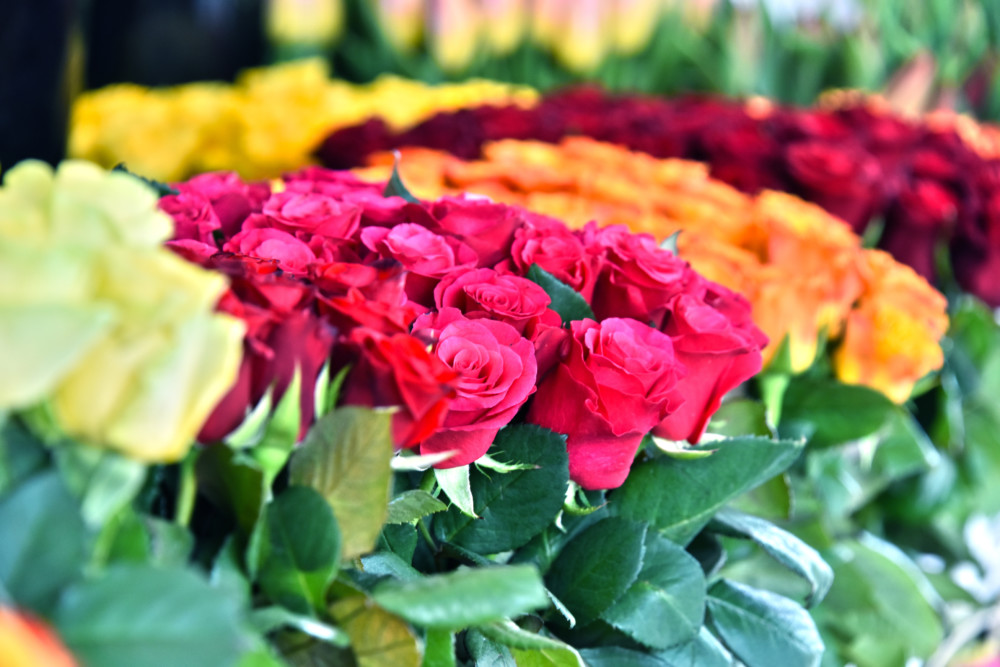By Jackie Crosby
Star Tribune (Minneapolis)
WWR Article Summary (tl;dr) A longtime champion of pesticide- and fertilizer-free blooms, Christine Hoffman saw a business opportunity to create a central marketplace where farmers and buyers who agreed with her could more easily find each other.
ST. PAUL, Minn.
Five years ago, Christine Hoffman struggled to get a reliable supply of locally grown and chemical-free flowers to sell at her St. Paul store, Foxglove Market and Studio.
At the time, just two flower farmers in Minnesota and Wisconsin were using the kind of earth-friendly practices she promoted exclusively. But whenever the farmers showed up, Hoffman despaired because she worried that what she didn’t buy might not get sold.
A longtime champion of pesticide- and fertilizer-free blooms, Hoffman saw a business opportunity to create a central marketplace where farmers and buyers who agreed with her could more easily find each other.
She gauged interest with farmers and florists. She went to Seattle to tour what then was the nation’s only local wholesale flower market. And then she convinced a food hub, the nonprofit and mission-driven Good Acre, to let her sell cut flowers there.
Earlier this month, the Twin Cities Flower Exchange opened for its second year, claiming to be the only flower market in the country where 100 percent of the product is both locally grown and chemical-free.
“It’s unusual,” Hoffman said, “and challenging.”
The market, which serves wholesalers only, is still very much in startup mode. Hoffman established it as a for-profit enterprise and said she came “close to breaking even” in the inaugural growing season last year.
Hoffman offered the opportunity to 20 farmers last year, but trimmed the roster to 12 this year to better manage the variety of buds and blooms for sale and to get supply and demand in balance.
Each week, farmers drop off their cut flowers at the Good Acre building near the University of Minnesota’s St. Paul campus farms. Hoffman stores the flowers on pallets in the coolers and runs the market, so that the farmers don’t need to be on site. In return, she takes a 30 percent cut of all sales.
Buyers include florists with retail operations, wedding and event planners, photographers and restaurateurs. They pay a $65 annual fee for access to the market. Hoffman now has a registry of 50 buyers, up from 30 last year.
“It’s an amazing gift she’s given us,” said Ashley Fox, a Woodbury, Minn.-based wedding designer who used to spend six or seven hours driving around to farms to collect the most interesting and inspiring stems. Now she travels 20 minutes from her home-based studio.
“This type of market is not offered anywhere in the Midwest,” she said. “You have to go to the coasts to find something like this.”
For buyers like Fox, the Twin Cities Flower Exchange offers a wide selection and one-stop shopping. Farmers, meanwhile, get to spend more time in the field and less time marketing and making individual deliveries.
“Building that large of a portfolio with wholesalers, and building relationships, is very time intensive,” said Michael Pursell of Late Bloom Farm in Northfield, Minn. “This is a fantastic opportunity to connect with designers and florists that might take us years to broaden out to where they’re operating.”
Hoffman grew up in Mankato, Minn., and spent her childhood foraging for wildflowers in the woods along the Blue Earth River. Her great-grandparents were urban flower farmers and her parents both avid gardeners.
Though most of her time has gone to launching the Twin Cities Flower Exchange, she still uses the Foxglove space for workshops and educational talks about the need to step away from agricultural practices she believes rely too heavily on chemicals.
Her advocacy has put her at the forefront of what’s known as the “slow flower” movement, an effort started by a dozen California farmers in 2011 as an alternative to the mainstream cut-flower market.
With about 85 percent of flowers sold in the U.S. grown overseas, where labor is inexpensive and regulations often more lax, the slow flower movement aims to build a more robust consumer market for American-grown flowers that focuses on seasonality.
“The floral industry, like many others, is built around unnatural expectations of abundance,” Hoffman said. “Building this new model is meant to offer a more sustainable alternative and to support a viable local flower economy.”
Getting the Twin Cities Flower Exchange off the ground took time and patience. Because she wanted to locate the market at the Good Acre, where operations center around fruits, vegetables and other fresh produce, Hoffman’s Flower Exchange underwent a six-month process of certification by federal and state agriculture officials.
Now that the infrastructure is in place and some of the first-year hiccups are better understood, Hoffman and her supporters believe consumers will come to appreciate the “field-to-vase” movement in the same way that many regard craft breweries, organic farming and other buy-local efforts.
“Having something like the exchange is important because that’s where we can tell a story,” said Amy Backman, owner of Spruce Flowers & Home in Edina, Minn. “We can say, this is grown by farmers in our backyard.”
Backman buys 10 to 20 percent of her product from local farmers, but sees potential to add more. If she needs 200 pink dahlias for a wedding, for example, she can count on Hoffman to act as a broker with her farmer network to deliver sufficient quantity.
“It’s a huge opportunity,” Backman said. “There are certain things you get locally that just perform better. It’s possible to get excellent products from Europe and down the street.”














































































































































































































































































































































































